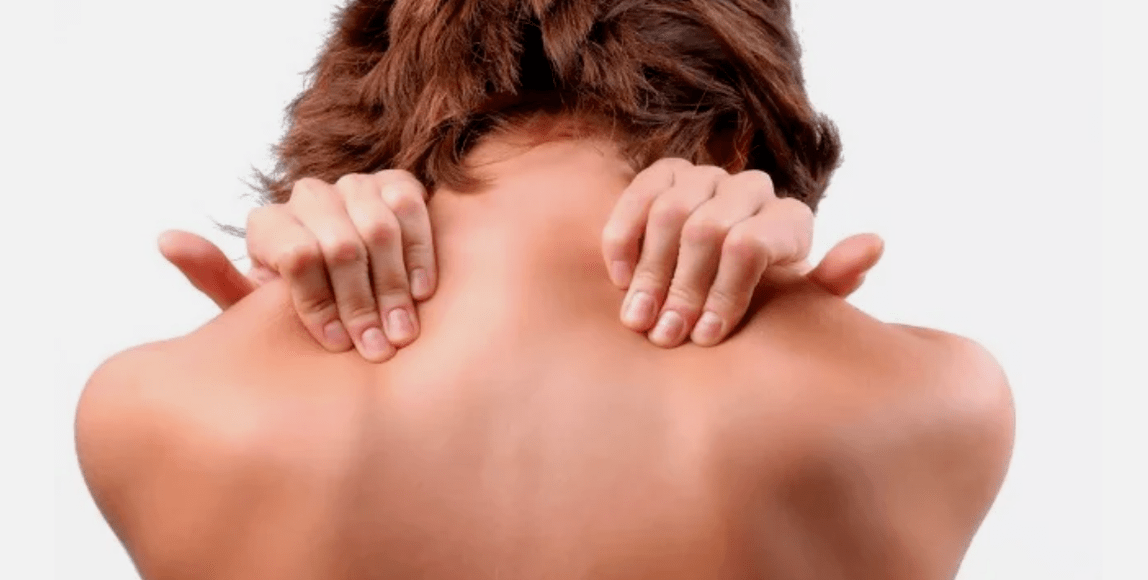
Cervical osteochondrosis is a disease in which the pulp between the vertebrae, which acts as a shock absorber, becomes a concrete tissue.
Pain in the neck?Dizziness?Crunch?Cervical recordings?"Is osteochondrosis really ..." - think an inquiry on the Internet.Without panic!Osteochondrosis of the cervical spine is not a sentence, it can be prevented, slowed down and even healed.How?Let us find out.
introduction
Unfortunately, the cervical osteochondrosis is a calm and insidious disease.You may not suspect its existence until you feel the muscle cramp and pain on the neck at some point.Dizziness and deafness of the limbs are often added.
The reason for such apparently non -related phenomena in the complexity of osteochondrosis.
What is osteochondrosis: from the general ...
Osteochondrosis is an illness of the spine in which the intervertebral discs are damaged and perform the role of shock absorbers.They press and decipher and indicate the spine elasticity and elasticity and enable the body to maintain a balance in the movement process.With their partial or complete destruction, this balance is lost, which inevitably influences the motor activity of a person.The cause of such changes is often the physical wear and deformation of the hard disk or easier to "aging".At the same time, the rest of our body can serve us faithfully for many years.
It is generally recognized that osteochondrosis is an age disease.In recent years, however, the disease has been noticeably "younger": there have been 25 years in the risk zone and even younger.The guilt of everything is a sitting lifestyle, malnutrition and uneven physical activity on the body.In addition, statistics show that women are more sick than osteochondrosis.First of all, this is due to anatomical properties and emotional background.However, the disease is more difficult in men.
... to private - cervical osteochondrosis
Osteochondrosis of the cervical spine is most common.The fact is that it is in the neck that the majority of the vessels and nerve endings are concentrated, while the vertebrae are much smaller even here (about half compared to the lumbar department), and the muscle corset is tangible.
Together with the high mobility and closeness of the spinal cord, the neck of our body needs increased attention.
Why is cervical osteochondrosis dangerous?
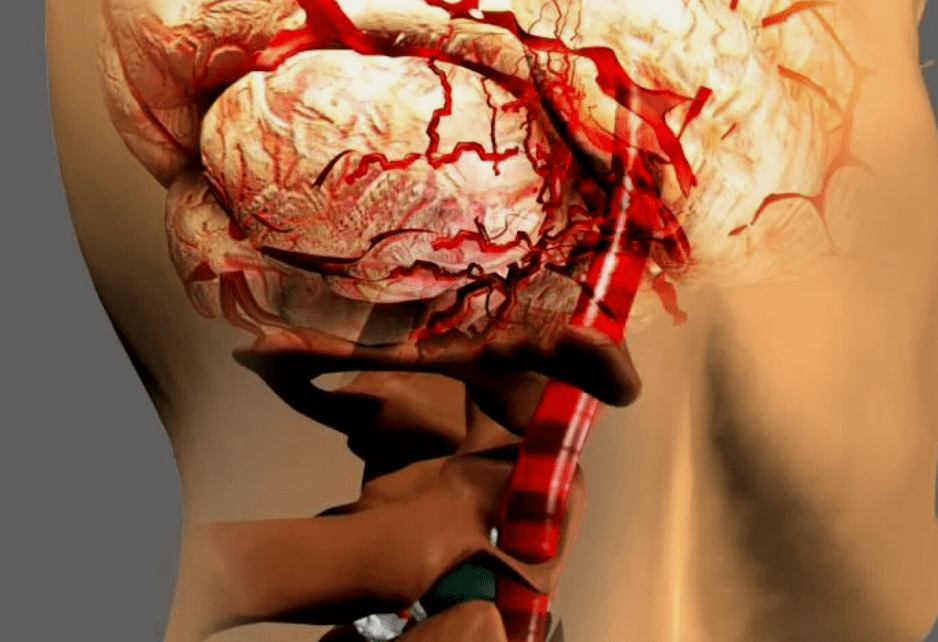
Unfortunately, the danger of a neck osteochondrosis is anatomically justified - the vertebral arteries flow through the cervix region, which saturate important brain centers in the back of the brain.And malfunctions and violations of blood supply can be irreversible in nature, from the pathological curvature of the spine (Lordosis of the Neck) to the full loss of motor skills, stroke and even death.
Fortunately, it is almost impossible not to notice the symptoms of an impending disaster: problems with coordination, a strong deterioration in vision and hearing, frequent dizziness and loss of consciousness ...
If you have noticed these characters with regular sore throat, contact a doctor immediately!
Diagnosis and symptoms of a cervical spine vertical osteochondrosis
Osteochondrosis is a serious disease, and only a qualified specialist, ie a vertebrologist who specializes in solving problems with the spine can diagnose orthopedist or neurologist.
The most precise ways to diagnose the cervical osteochondrosis: X-ray, computer tomography (CT) and magnetic core resonance (MRI), which not only enable the symptoms of ear, osteochondrosis, but also other simultaneous changes in the body.
If a number of the following symptoms appear, seek advice to the doctor immediately.
- blunt, painful, intense pain in the neck and neck
- Cervix, crunch when turning the head
- Dizziness, "veil" before my eyes, passed out
- Headache
- Nausea, vomiting
- Dustiness of the limbs
- Rowing in the ears, visual impairment
- General muscle weakness
Pain in osteochondrosis often pain, the head is given and are accompanied by the deafness of the arms and legs.This is initially caused by a clamping of the nerve endings and an increase in intracranial pressure.
Type of osteochondrosis
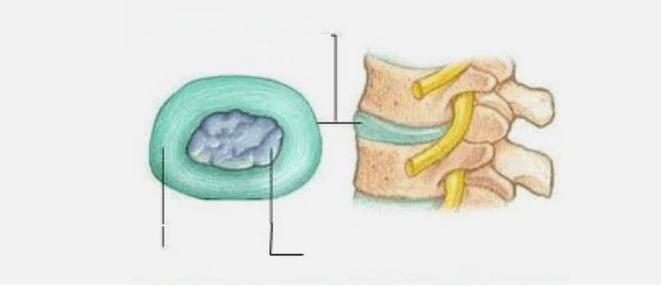
As with any illness, osteochondrosis of the spine has several stages of development.
For a better understanding of the processes that occur in the body, we suggest first to understand the structure of the hard drive itself and then to analyze which changes are characteristic for every stage of osteochondrosis.
The vertebral disc itself consists of several parts: a pulpo buns -jacket core (inside), a fibrous ring (outer shell) and a hyaline cartilage that separates the pane from the vertebrae and performs the function of the power.
The pulp core is rich in water, and it is responsible for the depreciation, the adaptation to the focus, presses and moves like a mercury ball.The fibrous ring, which on the contrary, surrounds it, has a solid structure and consists of intertwined fibers.Since the main task of the fiber ring is to protect the core from damage, it assumes the "blow" at high loads.
Stadiums of osteochondrosis
Four stages of osteochondrosis are traditionally differentiated.
Cervical osteochondrosis of the preclinical stage 1.
This is the early stage of the disease in which the so -called "drying" of the disc occurs: its size and elasticity are reduced.
At the same time, however, there are no structural changes as well as symptoms and correspondingly complaints.You may not feel uncomfortable;The only "harbinger" can turn out to be the morning stiffness and salt deposits in the neck.Although you see our way of life, these sensations are more of the norm.
Cervical osteochondrosis of the 2nd degree - the beginning of structural changes
This is where irreversible changes in the pulp core - necrosis and destruction by violating the metabolic processes begin - at the same time as the formation of cracks in a fiber ring.
The body begins to send SOS signals in the form of a sharp pain in the neck, reduced endurance and a quick fatigue.
Cervical osteochondrosis of the 3rd degree - progressive discos
The narrowing of the fibrous ring is disturbed, with the pulpoker "protruding" through the formed cracks into the vertebral canal.
If the outer shell does not completely break, the intervertebral disc can still be restored.This process is referred to as the lead of the spine and successfully treated on an outpatient basis.At the same time, they feel constant pain in the neck and in the entire back, progress at loads and remain in an unpleasant position.
In the full destruction of the fibrous ring, problems with coordination, dizziness and nausea are added to pain;There is a risk of disability.It is necessary to quickly find medical help!
Cervical osteochondrosis of regeneration 4. degree -
As a result of irreversible processes between the vertebrae, growth (osteophytes) are formed that block the mobility of the joints.The pulpoose core is replaced by a scar tissue, the nerve endings are injured, a healing is only possible surgically.
Paradoxically, you can feel noticeable improvements in terms of the borehole - the spine is again gaining the ability to take loads.However, the pain and limited motor activity will only increase.
The causes of osteochondrosis

Unfortunately, one has to speak of the causes of such a difficult disease as osteochondrosis, and many factors have to take into account: from external conditions to physiological disposition.
How can you understand that they are endangered?Mentally set a checkmark compared to each of the points suitable for you and your lifestyle.
- Did you have spine injuries?
- Is there excess weight (degree of obesity)?
- Researched by bad habits (smoking, alcohol consumption), regular stress?
- Do you suffer from chronic infectious diseases, metabolic disorders?
- Is your work with hard physical work together?
- Was you diagnosed with attitude and/or flat feet?
- Do you experience regular loads on the spine?
If at least one of the questions you answered in the affirmation, unfortunately, you are at risk.That's bad news.But there are also good: osteochondrosis of the cervical spine can be stopped, healed and even prevented with the timely diagnosis and the start of proper prevention.
How to prevent osteochondrosis
There are a number of preventive measures that we recommend watching the game "before leading" with osteochondrosis of the cervical spine.
Step 1. Get up!
Do you lead a seated lifestyle?Working devices work, many hours of stay on the computer, irregular and poor nutrition, lack of sleep, stress ... is familiar?
All of this contributes to the "stagnating" processes in the body and provokes the initial stage of osteochondrosis.
To avoid the progression of the disease, you can reasonably approach the daily routine, take regular breaks (five minutes every hour) and take care of your health.Believe me, very soon you will say "thank you" yourself!
Accept a rule: remind you memories (or in particularly "neglected" cases - an alarm clock) so that you do not miss the moment if you just have to get up and go.
Step 2. Take care of your own convenience!
With convenience we mean the physical signals that the body gives.Listen and be careful!
Avoid excessive and inappropriate loads first.If you are regularly in the gym, the dose weight, do not miss the warm up and follow the regularity of the training.
Second, they give up uncomfortable shoes.We are not ruthless to get rid of your favorite output shoes or boots -let them stay for special occasions.It is important that these "special cases" do not go to their lifestyle in around the clock."For every day" choose shoes with a comfortable block that does not cause symptoms and does not affect attitude and gear.
Third, you do not save furniture and sleep accessories.If the Office chair is not categorically suitable for you, make a compensation for the replacement or take care of your own comfort.Then this can save a time investment before serious regular editions.
Use only anatomically correct furniture that reduces the charge of the spine.Choose a bed with a hard mattress and a comfortable pillow for a house that is suitable in density and height.Anatomical or ordinary - you decide because a lot depends on the properties of your body.
Step 3. Do not forget prevention!
Warned - means armed, isn't it?
If you want to feel periodic tiredness and pain in the neck and back in the back or avoid, we recommend a simple series of exercises that are particularly effective in the initial (preclinical) level of osteochondrosis.
Gymnastics for cervical osteochondrosis
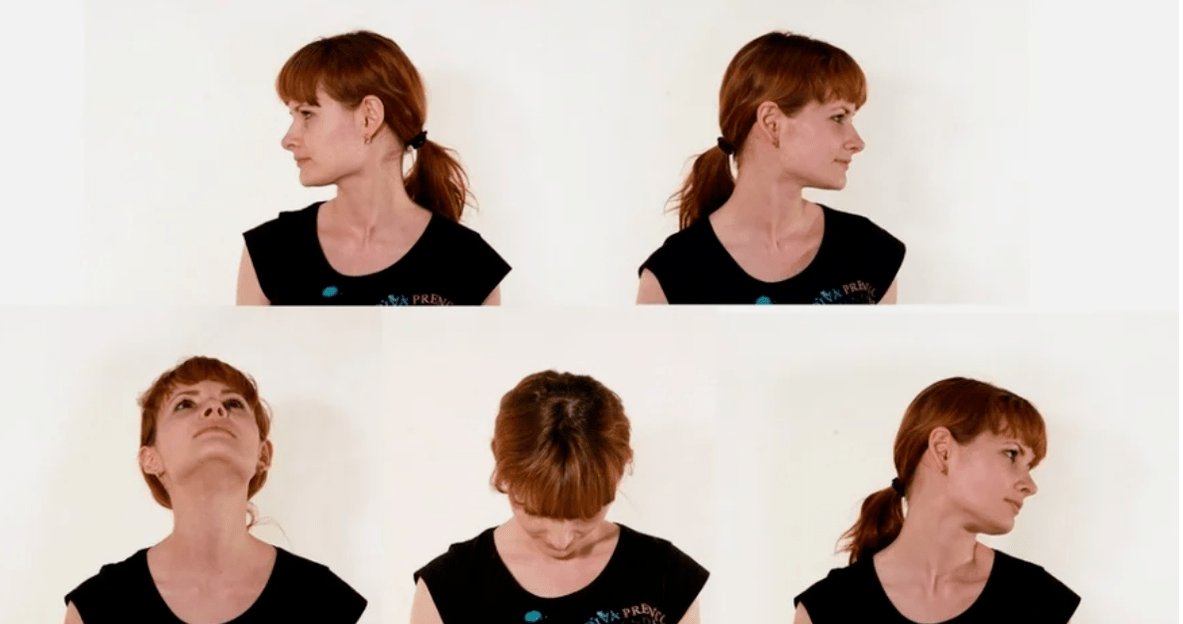
You can carry out gymnastics for osteochondrosis of the cervical spine both at home and directly at the workplace.
- Sit evenly, smooth your back, relax your hands and lower it on the body.Turn your head alternately to the right and left, about 90 degrees (or how much the joints allow).Move smoothly and avoid sudden movements.
Perform 8 repetitions for the first time and gradually increase the number of curves in each direction in the future. - Tend your head forward in the same position, press the chin onto the chest and back, take the back of the head to the neck.Also start with 8 repetitions and rise to 15 times.
- Next go to your shoulders.First lift both shoulders (towards the ears), last a few seconds and lower them back.So 8 repetitions.
Then move your shoulders alternately: right upwards, left down, shifting - 8 repetitions. - Place your palm on your forehead and press forward with a simultaneous inclination of your head.A break 10 seconds - and 8 times in a row.
After the end of the complex, be sure to keep your neck to relieve the tension.
Attention!If you feel serious symptoms during the exercises, contact a specialist and dose the load carefully!
Cervical osteochondrosis: treatment
The treatment of osteochondrosis of the cervical spine can be narrow or complex, with several components being combined at the same time.
Physiotherapy
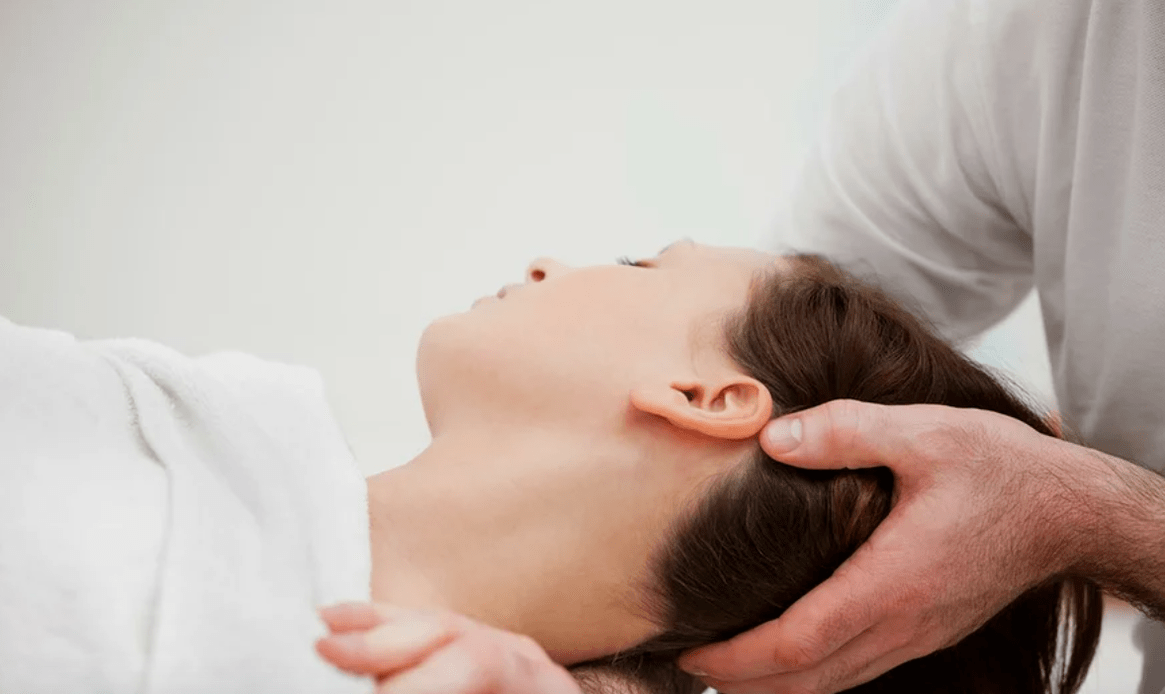
Physiotherapy for cervical osteochondrosis is a method of local effects directly on the focus of the inflammation.The therapeutic effect is achieved due to the improvement of blood circulation and metabolic processes.Stop the pain in the neck, the severity of the symptoms decreases.
There are many options for physiotherapy for osteochondrosis of cervix: electrotherapy, exposure to magnetic, laser, water and sludge methods, electrophoresis, acupuncture and moderate warming of the inflamed area.
Before you register for procedures, carefully examine the contraindications and consult your doctor.
massage
With cervical osteochondrosis, the massage of the collar area helps well.You can register for sessions for masseur or massage yourself with professional vibration massages.
Medicines and diet
The most common drugs used in osteochondrosis of medication include anti -inflammatory drugs, pain relievers, anti -spas modos, antioxidants as well as medication to improve blood circulation and metabolic processes.The drug spectrum includes tablets, creams, ointments and solutions for intramuscular injection.
Remember only a doctor can competently choose a medical medication!
A balanced diet will help increase the effectiveness of medication and to improve the overall tone of the body.Limit the consumption of fat, spicy, smoked food, salt.Preference for vegetables and fruit, properly cooked meat, fish and dairy products.Add nuts and honey to the nutrition.And drink more liquid.
Even if osteochondrosis does not threaten it, a balanced diet has a positive effect on the general borehole and the condition of the body.You will see that after a few weeks you will notice amazing changes!Check for your own experiences!
























